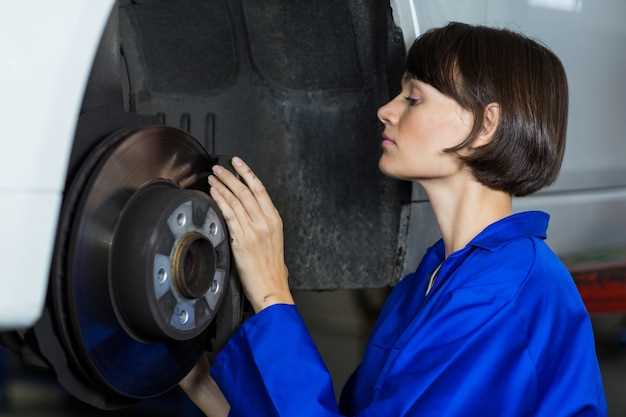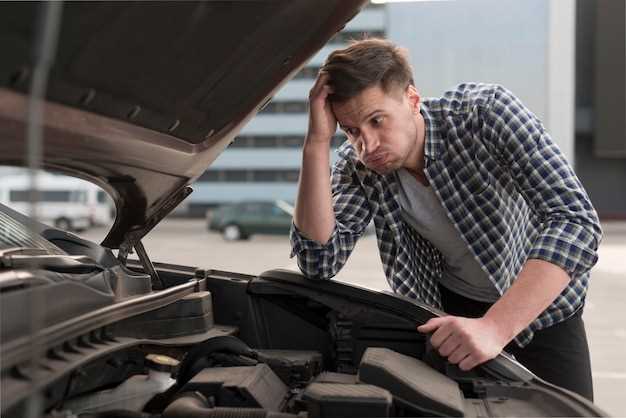How to Replace a CV Joint

When it comes to maintaining your vehicle, understanding how to replace a CV joint is essential for ensuring optimal performance and safety on the road. The CV (Constant Velocity) joint plays a crucial role in delivering power from the transmission to the wheels while allowing for the necessary flexibility during turns and suspension movement. Over time, exposure to various elements can lead to wear and tear on this vital component, necessitating its replacement.
This comprehensive guide will walk you through the process of replacing a CV joint, step by step. Whether you’re an experienced mechanic or a novice DIYer, following these detailed instructions will help you successfully complete the task. You will gain insights into the tools needed, safety precautions to take, and techniques to ensure a smooth replacement process.
Replacing a CV joint might seem daunting, but with the right approach and a bit of patience, it’s entirely achievable. By the end, you will be equipped with the knowledge necessary to tackle this project with confidence, restoring your vehicle’s functionality and extending its lifespan on the road.
Identifying Symptoms of a Failing CV Joint

Recognizing the signs of a failing CV joint is crucial for maintaining vehicle performance and safety. Common symptoms include:
Unusual Noises: A prominent indicator of a damaged CV joint is the presence of clunking, popping, or clicking noises, particularly during acceleration or sharp turns. These sounds result from the joint’s inability to function properly, indicating wear and tear.
Vibration: Excessive vibration while driving, especially at higher speeds, can signal that the CV joint or its associated axle is failing. This shake typically results from an imbalanced or worn-out component affecting the smooth transfer of power from the engine to the wheels.
Grease Leaks: Inspecting the CV boot is essential. If you notice grease leaking from the boot, it’s a strong sign that the joint is compromised. A damaged boot allows dirt and debris to enter, leading to further deterioration of the joint itself.
Difficulty Turning: If you experience difficulty when turning, particularly when making sharp turns, this might indicate that the CV joint is damaged. A failing joint can lead to reduced steering response and increased effort needed to change directions.
Uneven Tire Wear: In some cases, a failing CV joint can contribute to abnormal tire wear. If one side of the tires shows significantly more wear than the other, it may be related to issues with the axle or the connected joint.
Addressing these symptoms early can prevent more severe damage to your vehicle and ensure safe driving conditions. Regular inspections and maintenance can help prolong the life of your CV joints and axles.
Required Tools and Materials for CV Joint Replacement

Replacing a CV joint requires specific tools and materials to ensure the job is done efficiently and safely. Below is a comprehensive list of what you will need:
Tools:
1. Socket Set: A complete set of metric and standard sockets to accommodate various bolt sizes is essential, especially for removing axle nuts and other components.
2. Wrench Set: Open-end and box-end wrenches will help you access tight spaces and fasteners that a socket may not reach.
3. Torque Wrench: This tool is necessary to apply the correct torque to bolts during reassembly, ensuring that everything is secure and up to specifications.
4. Pry Bar: A pry bar is helpful in separating the CV joint from the axle or hub assembly without causing damage.
5. Hammer: A rubber mallet can aid in persuading the CV joint in and out of its housing without causing any harm.
6. Jack and Jack Stands: Proper lifting equipment is crucial for safely elevating the vehicle for tire and axle disassembly. Always use jack stands for stability.
7. Slide Hammer: In cases where the CV joint is stubbornly stuck, a slide hammer can provide the necessary leverage to extract it.
Materials:
1. New CV Joint: Ensure you have the correct replacement CV joint that matches your vehicle specifications and axle length.
2. CV Grease: Quality CV joint grease is vital for lubricating the new joint, preventing wear and ensuring optimal functionality.
3. Replacement Boot: A new CV boot is often recommended to protect the joint from dirt and moisture. Ensure it is the correct size for your CV joint.
4. Zip Ties or Clamps: These will be used to secure the new CV boot in place and prevent any grease leakage.
5. Cleaning Supplies: Brake cleaner, rags, and brushes are necessary to clean any old grease and dirt before installing the new parts.
Having the correct tools and materials is crucial for a successful CV joint replacement. Make sure to gather everything you need before beginning the process to save time and avoid frustration.
Step-by-Step Process for Removing and Installing a CV Joint
Replacing a CV joint requires careful attention to detail and the right tools. Follow this step-by-step process to ensure proper removal and installation.
-
Gather Required Tools and Materials
- Jack and jack stands
- Socket set
- Wrench set
- Hammer
- Screwdrivers
- New CV joint
- Grease (if applicable)
- Safety gloves and eyewear
-
Prepare the Vehicle
- Park the vehicle on a flat, stable surface.
- Engage the parking brake for safety.
- Loosen the lug nuts on the wheel associated with the CV joint.
- Use the jack to lift the vehicle, then secure it with jack stands.
-
Remove the Wheel
- Completely remove the loosened lug nuts.
- Take off the wheel to expose the brake assembly and CV joint.
-
Disconnect the CV Joint
- Locate the CV joint at the end of the axle and determine connections.
- Remove any fasteners securing the CV joint to the axle shaft.
- If applicable, remove the retaining clip or bolt that holds the joint in place.
- Gently tap with a hammer if the joint is stuck, being careful to avoid damage.
- Remove the CV joint from the axle shaft.
-
Install the New CV Joint
- Clean the mating surfaces to ensure a proper seal.
- If required, apply grease to the new CV joint.
- Carefully slide the new CV joint onto the axle shaft.
- Secure the joint with the retaining clip or bolt, ensuring it is properly fastened.
-
Reinstall the Wheel
- Place the wheel back onto the hub.
- Hand-tighten the lug nuts before lowering the vehicle.
-
Lower the Vehicle and Finalize Installation
- Use the jack to carefully lower the vehicle back to the ground.
- Torque the lug nuts to the manufacturer’s specifications.
-
Test the Installation
- Start the vehicle and inspect for any unusual noises.
- Take the vehicle for a short test drive, paying attention to the handling and any vibrations.
Following these steps will help ensure a successful CV joint replacement. Always refer to your vehicle’s service manual for specific instructions and torque specifications.

